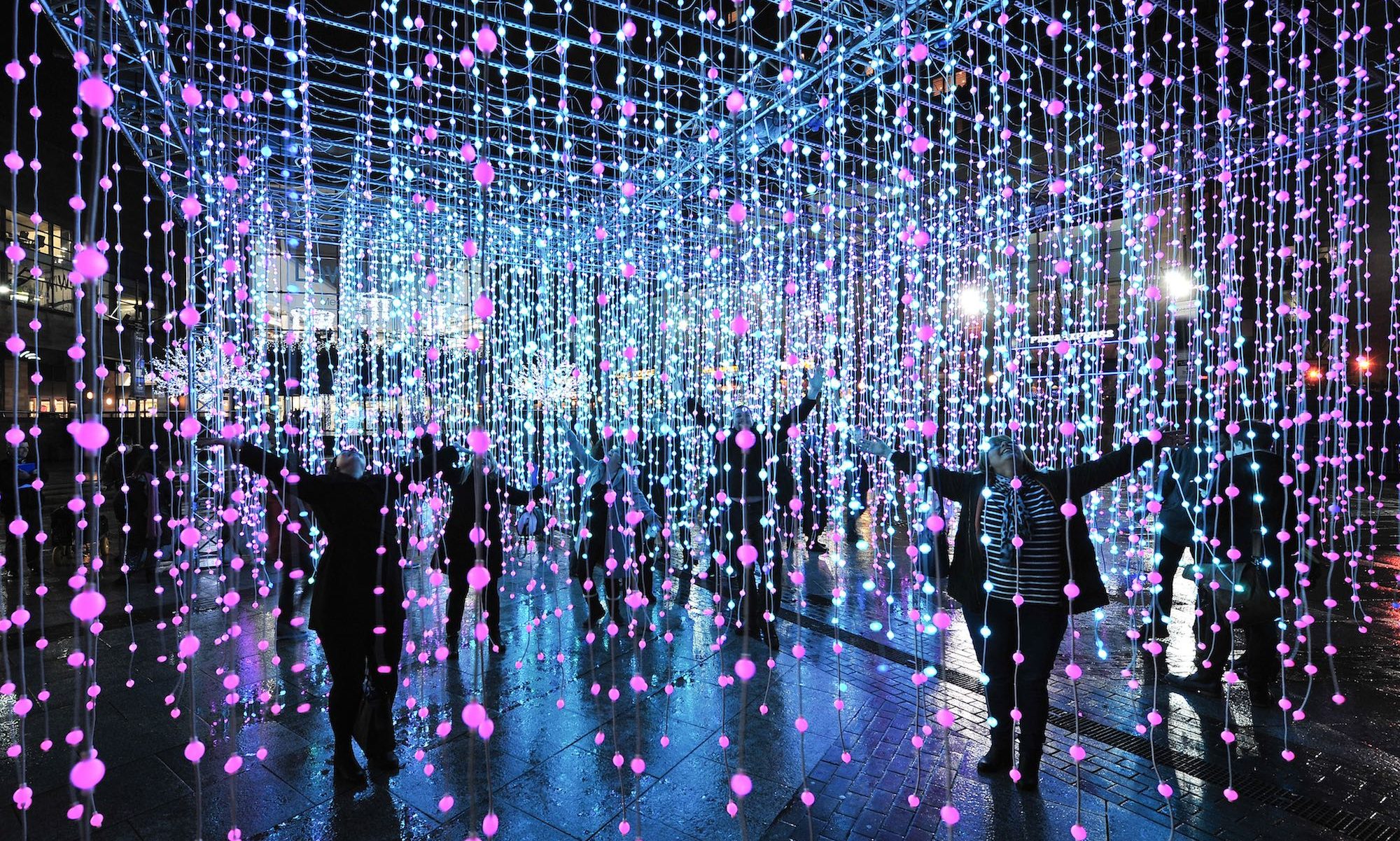So, my original idea was way too complicated. I’ve settled on a technique I think has a lot of potential that still uses sound. The idea is not my own, so I’m looking for ways to augment this further both from a visual perspective and the sound behind it.
Introducing: The Laser Oscilloscope
https://www.youtube.com/watch?v=utcmSCTGVj0&feature=youtu.be
Using sound to vibrate a membrane, in this case, a balloon, you can create many different shapes based on the frequencies you input. Amplitude seems to change the size of the shape as well. The first attempt involved using a bowl and stretch wrap, but that was very unreliable and the bowl itself was vibrating too much, causing interference.
The second attempt involved stretching a balloon over an old vitamin container, and glueing a piece of the reflective center of a DVD to the center. The pill bottle fits perfectly over a single speaker cone inside this bluetooth speaker. The resulting images were much clearer.
The shopping list so far has included:
- LED laser, $18
- Bluetooth speaker, $25
- Gorilla Glue, $4
- Balloon Pack, $7
- Broken kettlebell workout DVD, FREE!
- Duct Tape, $4
Since the initial concept works really well (persistence of vision is cool), I’m now wondering how to make the resulting image larger or more interesting. I know you can technically make a hologram by having four copies of an image project into a prism, but that might require too many LEDs and a multichannel speaker setup. I suppose reflecting the laser at the right angle might achieve an effect like that.
Also, there’s the question of what kind of music or sound I can design to create different shapes. The initial idea was done in Max/MSP by creating three [cycle~] objects that emit a sine wave at a floating point value. By mixing the signals, the detuning, or offset, of the waveform produces more complex shapes while “pure” tones like fifths and octaves produce more simple shapes, like a figure 8. I’m wondering what EQ filtering, feedback, and other signal processing effects will have on the shapes the laser takes.
As I experiment with the signal processing side, there may be an algorithmic way to produce different shapes within Max. Also, the frequency shifting could be controlled by another form of input, making it more interactive. For example, pitches could be controlled by sensors, whether that’s a webcam, a light sensor, proximity, maybe even a Wiimote or USB controller. It might be more fun to have some abstract, but physical control over the sound as it changes the laser’s shape.
Lastly, there might be other mediums to project and reflect the laser onto. Mirrors, or layered translucent fabrics, liquid, I’m not sure. I’d have to experiment more with that, but I do believe the final version should feel a lot bigger than this test version.
